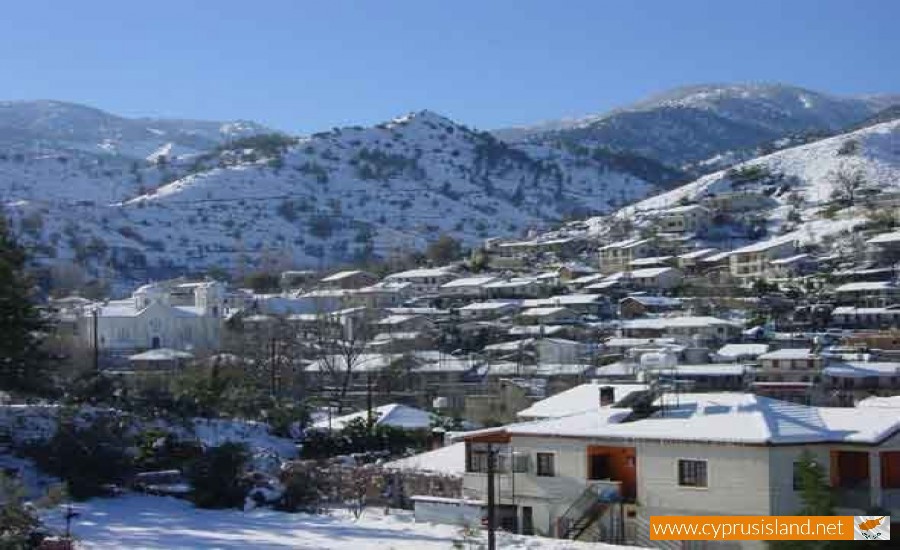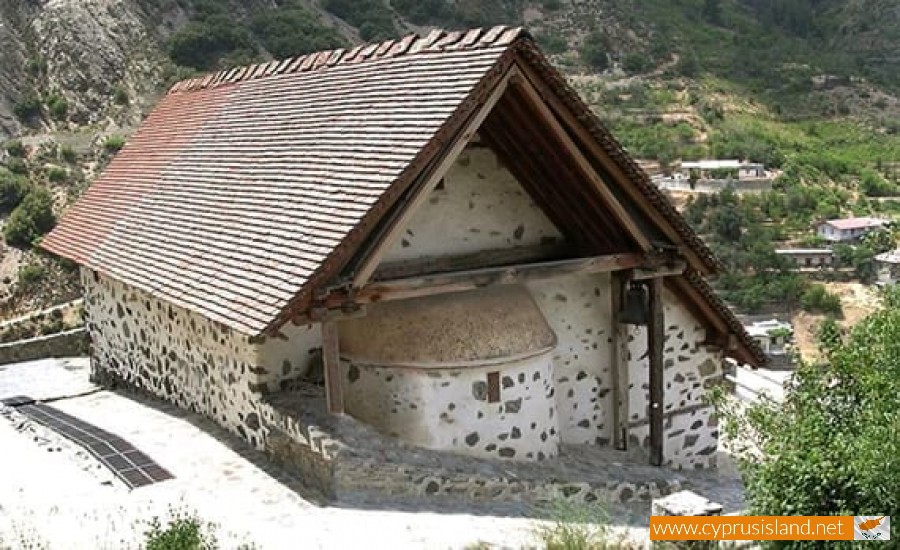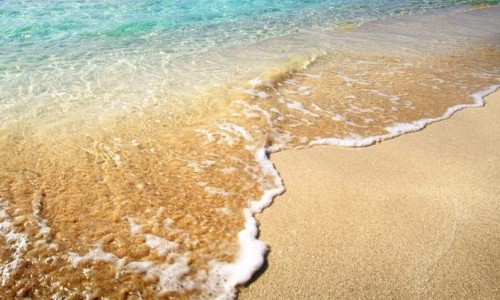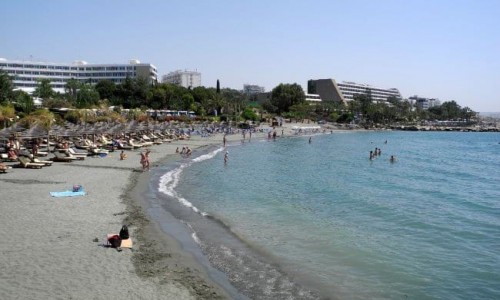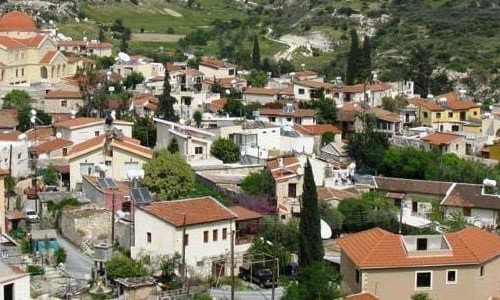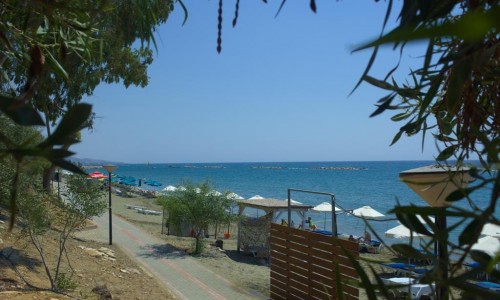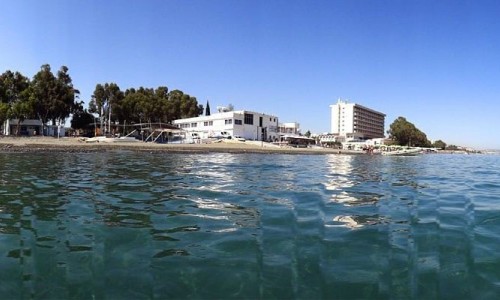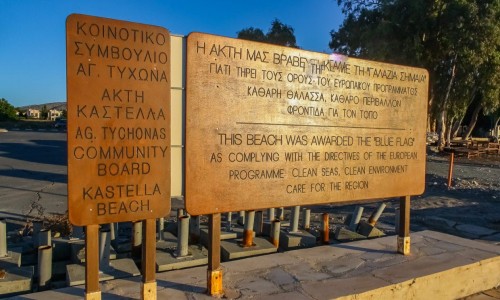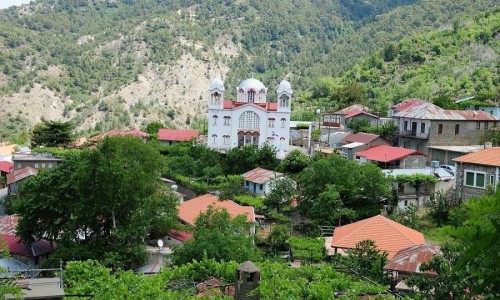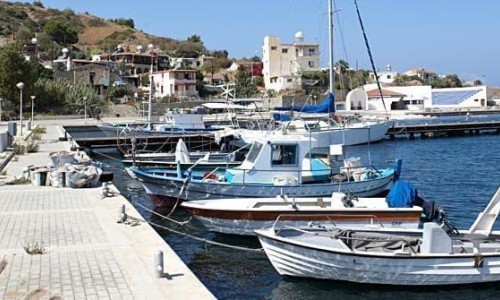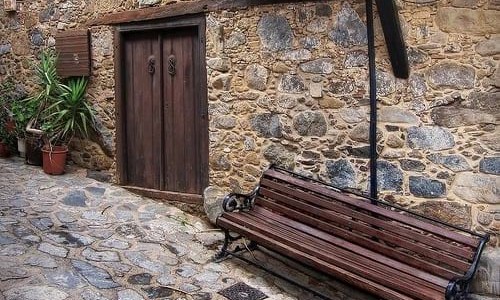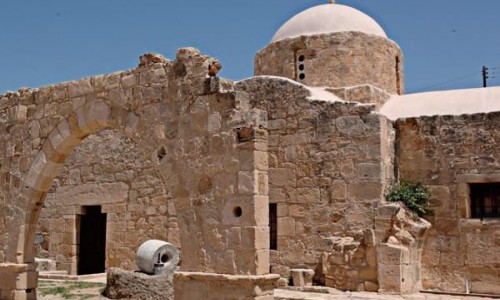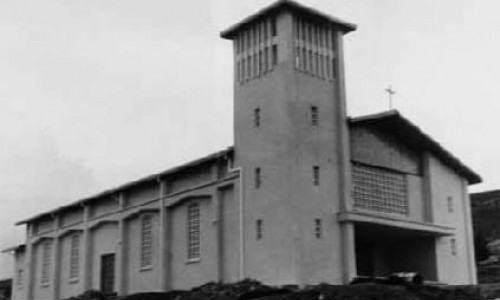Galata
Galata is a village which is located 60 kilometres west of Nicosia at the beautiful valley of Solia. It has an altitude of 620 metres above the surface of the sea and it is built at the two banks of the Klarios River, which is covered in green.
In addition, Galata is connected with the neighbouring community of Kakopetria. These two twin communities of Solia are very popular and they are visited every year by thousands of tourists and local Cypriots as well.
The village is well known for its tasty fruit which it produces in large quantities, especially apples of all types, apricots, peaches, cherries, plums, grapes and others as well as a variety of fresh vegetables. If one is to enjoy many summer hours in Galata one must sit in the village square. There under the shade of the oak tree and the river flowing next to it one can pass many unforgettable moments.
The houses in Galata are modern and traditional with a unique beauty. What is most interesting about them, are the wooden balconies and the wooden stairs of the old traditional houses. The tiled roofs, the houses built with, the wooden outdoors all add to the wonderful architecture which unfortunately is dying out. Mainly here is a splendid cultural heritage. The six byzantine churches with the pyramid shaped roofs and the square roof tiles show the visitor of its byzantine architecture of the 16th century.
Village Name
During the olden times, where the legend and history were joint, at the location of Esso-Galata were some shepherds and their flocks. The people who lived in the lower parts would go there to buy milk. They would say ‘Let’s go to the milkmen to buy milk’. Since then the village received its name of Galata which comes from the word gala meaning milk.
Another tradition states that the first residents came from Galatia of Asia Minor and were named Galates. Therefore the small community was named Galata. According to Leondios Macheras, Galata was a feud and was owed by a feud owner Rigos from 1196. We can therefore conclude that during the Frank period, Galata was owned by the De Giblet family. On the medieval maps, Galata is mentioned as being Golata and Galata.
A Russian traveller Vasilios Barsky wrote about Galata in 1735. He said that he went to Galata and he visited the monastery of Podithou which he describes. Later on he went to the village where he stayed overnight. He stated that he went to the nearest village and he stayed at the house of a Christian. It is known that in the village of Solea there aren’t many Muslim residents most of them are Greek Orthodox with many temples and many priests. This village is the nicest of all. There are many trees with fruit and water runs from the Klarion River.
The traditional houses of Galata
The traditional houses of Galata have beauty and charisma. The most impressive ones are the ones with the wooden balconies along the main road which leads to Kakopetria. Some have been renovated while the rest will also be renovated soon as they are under the protection of the department of Antiquities.
Moreover, Galata is well known as the village of balconies due to the many houses which have them. Nerly all the traditional houses were doublestory. The balcony was the wooden extention towards the main road, about 1.5 metres width and 2.5 or 3 metres length along the second story. This extension which also had a roof was held by three posts in order to be steadier. The older balconies of the village are those which are opposite the chapel of Ai-Giorgi and are connected until the Hani of Marangou. The oweners were Lambros Hadjigavriil, Hambis Mourtjis, Dimosthenis Kinigopoulos, Socratis Galatsis who also owned the coffee shop and the Hani of Maragou. The Hani of Marangou has been renovated and is now the Museum of Traditional Art of Galata.
The balconies which are to the west are also nice and some of them have been restored. Some of them are, the famous hotel of Fisa-Nikola he first hotel of Sola, Diogeni Georgiou, Papaloizou and others.
During the summer evenings, the balconies of Galata were at their fame. The whole family would sit outside enjoying the traffic of the main road. The father would rest from the days work and the mother would knit outside. The grandmother would also knit while the children would shout outside with the neighbours sitting on the balconies next door. A wonderful painting of the village a few centuries ago when Galata was the heart of Solia, and when it was the centre of commerce of agriculture and livestock.
The country house
The country house was usually double storey. It was built from the base until one metre, with rocks from the river or the mountain. From there until the roof it was completed with smaller blocks which were made by the Galatites. The roof was made with tiles and the roof was made of soil. On top of the soil they would put pinecones which were impenetrable during winter. The floor was made of tiles. The locks were necessary on the outdoors for insurance.
At the ground floor was the animal stable for the donkeys horses or chickens. There was also a barn with hay, a storage area with small and large clay pots. In these they would store wheat, flour, wine, zivania, vinegar, oil, olives, halloumi and others.
In the backyard there was the oven for cooking bread and near it a pile of wood for the oven as well as the fireplace. There was also the chicken cage with the chickens to pay eggs and the small pig which they would feed in order to use at Christmas. At Christmas they would make sausages, lountza , lard an zalatina. Each house also had a guard dog and two cats.
On the second floor there was a large room which was had all the kitchen utensils, the table and chairs. This room was the room which was mostly used in the house. In the other rooms 1, 2 and 3 were the bedrooms with the chests. In the chest were the dresses or the family, the sheets and the sets used for marriage. On the balconies the family sat for rest or when they invited friends and family.
Water Mills
The water mills of Galata during the olden days were four:
- The water mill of Trooditissa
- The water mill of Kyrillou which used to be owned by Kermidji
- The water mill of Rodous which was owned by the Monastery of Podithou
- The water mill of Pavlena
The two water mills of Trooditissa and Pavlena unfortunately do not exist today. The water mill of Rodous has been preserved but it does not operate. The only mill which operates as it did previously, is the mill of Kyrillou which is located in the middle of the village near the river Klarios. This mill operated until 1976. During the Turkish invasion it offered bread to the locals as well as the refugees which has gone to the area of Solia. The water mill of Kyrillou has been restored and it an attraction to both foreigners and locals.
To get to the water mill one must past through a tight and low opening of a large rock. There is a stone built hopper about 20 metres high from which the water is sent and gives motion to the mill. Then there is an entrance to a room where there are three mills next to each other. There is one for wheat, one for barley and one for groats. The mill stone is made up of very hard pieces of stone and comes from the island of Milos.
Water tap of Poyiadji
The water tap of Poyiadji is very close to the Museum of Traditional Art on the right hand side towards Kakopetria. Going down the steps is an arched water tap while there is water flowing from a small river which comes from Esso Galata and later connects with Klario River. At the tallest part of the water there is an inscription which is dated with 1733 and IC - XC NI - KA. It is called water tap of Poyiadji because this is where Dimosthenis Loizou Panayiotis washed the vrakes which he coloured. Until then the white vrakes which were made had to be placed in a special liquid in order to become black.
Agia Paraskevi Chapel
The chapel of Agia Paraskevi is located south of the village, on the road between Galata and Kakopetria. It is a one room chapel with a rectangular chamber to the altar which is covered under the same roof. The point of this chamber, according to the manager of the Antiquity Department Mr. Athanasios Papageorgiou, was that it was used as a death chamber for the tomb of the owner of the temple or the clergyman of the temple.
The dimensions of the temple are 7, 20 Χ 3, 60 metres without the arch. The walls of the church are made of unprocessed rocks and mud at a height of three metres. There are only iconographies on the upper part of the temple. There is the rising of Christ and under it the first witness Stefanos. At the fourth part of the arch there is the Virgin Mary. To the left and right there are the Archangels Michael and Gabriel. Under the Virgin Mary, there are the saint Epifanios , Athanasios and Ioannis Chysostomos north of the small window and to the south the saints Vasilios, Grigorios Theologos and Spyridonas. In between the Virgin Mary and the Three Hierarches there is an inscription. On the 26th of July, is the celebration of Agia Paraskevi and the chapel operates.
Agios Georgios Chapel
The small chapel of Agios Georgios is located in the middle of the village, lower than the road which connects Galata with Kakopetria. The temple is dated of the first quarter of the 16th century.
Agios Nikolaos Chapel
The chapel of Agios Nikolaos is located at the entrance of the village, to the west near the old road of Kallianon-Galata and is dated to the 15th century. It is a one room rectangle with interior dimensions of 7Χ3, 63 metres. The temple is built with unprocessed rocks and mud. The walls of the temple have a width of 0, 58 – 0, 60 and a height of 2, 34 – 2, 36. The floor is paved with plinths. To the north wall, west of the north entrance there is a piece of iconography saved with three monk figures. The two are of Agios Andronikos and Agios Vehianos. They can be dated to the first half of the 16th century according to Athanaio Papageorgiou. It seems that the whole north wall would have been filled with iconographies. On the 6th of December the chapel operates as it is the day which the saint is celebrated on.
Agios Tychikos Chapel
The chapel of Agios Tychikos in Esso Galata was located at the first community of the area, possibly of the 11th century. The temple was dedicated to Agio Tychiko.
The exact location of the Lambadou village is unknown. The residents of Galata as well as the nearby villages believe that the village or this small community was close to the chapel of Agios Georgios of Perachoriti to the east of Kakopetria and to the east of the tourist road towards Troodos.
Lambadou or Lambadis or Lambadistos was the birth area of two saints, Agios Eraclidios and Agiou Ioanni Lambadisti. The reasons which follow support and maintain the version that Lambadou was at the area mentioned:
- According to the church, Agios Ioannis Lambadistis of the year 1667 was from Lambadou of the Galaton area.
- The Russian traveller Vasilios Brasky who stayed in Galata during stated that the place where the saint Ioannis Lambadistis was from, Lambadis has been now been deserted which I realised while I was in Solea.
- A little outside Galata is a bridge which is named as bridge of Aieraklithkiou that is the bridge of Agios Eraclidios.
- There is a location very close to Galata with the name Moutti tis Lambadas
- In the byzantine temples of Galata and Kakopetria, there are iconographies of the saints Agion Eraclidiou and Ioanni Lambadisti.
There is a mentioning of the existence of a community called Lambas in the community of Galaton which shows that’s the community was located in the area of Solia where the large village Galata is located.
Agios Eraclidios
According to the legend of Agios Eraclidios as well as other sources, we can conclude that he was a heathen and a son of someone called Ierokleous or Ierokli, priest of the heathen. It is well known that the ancient Cypriots as well as the ancient Greeks believed in the twelve gods of Olympus.
In 45 A.D the apostles Paul and Varnavas came to Cyprus in order to spread the religion of the Nazorean and passed from Lambadou which was near Galata. Here the apostles met the young Eraclidio with his father who were offering a sacrifice to the gods. Ieroklis invited the strangers to take part in the sacrifice as well. The apostles denied and only asked for them to show the way towards Paphos. Ieroklis allowed his son Eraclidio to escort the Apostles and show them the way. While they walked the Apostles showed Eraclidio the true religion of Jesus Christ and how nice it was compared to the religion in which he believed in. Eraclidios was so overwhelmed with the new religion that he believed and was baptised. The apostles later on made his the Episcope of Tamassou.
Agios Ioannis Lambadistis
Agios Ioannis Lambadistis was from Lambadou as his last name shows as with Agios Eraclidios. He lived during the 11th century. His parents were the priest Kyriakos and his mother Anna. From a young age he was nurtured with faith and learned the Holy Scriptures. Because of his big love to God he became dedicated to him completely.
When he was 18 years old his parents pressured him to become engaged, as they considered him to be the fruit of their prayers. After the engagement, Ioannis decided to break his engagement and dedicate himself to God. This decision was also announced to the parents of his fiancé who pretended to still love him after this action. They had invited him to dinner where they poisoned him resulting in Ioannis becoming blind. The scene of the dinner with the poisoned fish is displayed on a large icon which is located in his monastery in Kalopanayioti. Even though he was blind, he said that even though they took out the eyes of the body, he still has the eyes of his sole in order to pray to God even more.
Along with his assistant, he leaves Lambadou and goes on to the monastery of Agiou Eraclidiou. He lived for three years teaching anyone who wanted to learn about life near Christ. He was only 22 years old when he gave God his life.


